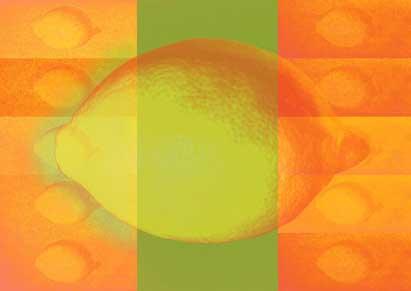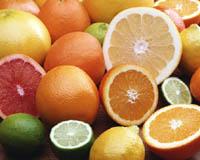Extras and extras Extras Extras
2002/12/01 Lorenzo, Arantza | Uranga, Ane Miren Iturria: Elhuyar aldizkaria
By law, additives are physical substances that are added to food to give them a better flavor or preserve them better. The best known of this large group are salt and vinegar, used since prehistory. In some cases, some substances are added with the aim of increasing the nutritional value of food; in these cases, these substances are not considered additives, for example, if vitamin C is added to the food in the ingredient list, the substance will appear with that name. On the contrary, if the same substance is added to fulfill the antioxidant function, it will be considered an additive and in the ingredient list it will appear as ascorbic acid or as E-300, never as vitamin C.

In the 1995 edition of the book Handbook of additives, 2,500 authorized additives are mentioned, although the most used are about 350, of which 125 are only used in very special situations, such as boric acid that is added to caviar.
Requirements Requirements Requirements
They must be safe, essential and effective.
To be considered essential, it should be demonstrated that there are no other forms of conservation of these foods. This requirement is easy to demonstrate in preservatives and antioxidants, but not in aesthetic additives.
The certainty of certainty is decided by the FAO/WHO team of experts on additives. Before making the decision, try animals of two species and, if no problems arise, set a maximum daily dose per person.
Each country publishes its own list of authorized additives and only those in it can be used; if no additive appears, it means it is forbidden.
The 0.03-0.05% of allergies produced in the European Union are due to additives. According to data from the Spanish Association of Allergy and Immunology, 4.5%.
Therefore, it is necessary to have in the market a system of immediate localization of the additive in the food.
Designation of supplements supplements In the European Union there is a code for the designation of additives: The nomenclature of the additives is composed, first, of a large letter E followed by a number of three or four figures. The most frequently used are: E-100 - 180 Colorants E-200 - 290 Preservatives E-300 - 321 Antioxidants, the most used is ascorbic acid E-300 E-322 - 404 Emulsifiers and stabilizers, for which the E-322 is used, soy lecithin. The additives used to flavor food do not fit this code, since there are other specific rules for their designation. |
Why so much concern?
A black ghost moves constantly around the additives, at any time we can find on the street a mysterious list of “harmful” additives. These lists are made without any kind of scientific basis and the information they disseminate is very variable from one edition to another.
To understand it better we put an example. Citric acid (found naturally in citrus fruits) is known as E-330. In a 1995 list it was argued that it caused cancer, while in subsequent editions it was attributed the falsity of the above, so it caused problems in the digestive system.
When preparing these lists, the amount of additives is not taken into account, as if it were a taking more or less equal. For example, E-250, E-251 and E-252; sodium nitrite, sodium nitrate and potassium nitrate are considered responsible for stomach cancer without taking into account doses. As a result, the fear that we have for consumers causes producers to use less and instead sulphite and erythrobite salts have been used.
But beware, we do not mean that everything serves on this subject. Our obligation is to ask food for the necessary certainty and not to have microbes. We must use the smallest possible number of additives in our diet, something that is often easy. Normally the foods with the highest amount of additives are not necessary for a balanced diet (eg, candy, candy, etc. ). ), we can live quiet without them. In this sense, we must be very careful with children, who are the great consumers of these products.
As a final note we will indicate that although no colorant or preservative has been included on the label, it may contain other additives, antioxidants, moulders, etc.
When naming them we can also have surprises because additives are not only those who carry E (they can also be called with full name). For example, how many additives do you think this product has? Toffee mousse: milk, cream, sugar, sweet milk 8%, skimmed milk powder, gelatin, caramel, modified starch, emulsifier E-472b, flavor and stabilizer (E-407). It has a total of four additives.
Therefore, we recommend that foods containing additives be consumed as little as possible, but bear in mind that in some cases they are beneficial for food conservation.

General classification of additives Three large groups are distinguished, among which are others or more. That transform sensory characteristics Colorings Caramels and gominolas are of great importance to attract the attention of children, since the success of these products is due to dyes. Natural dyes are the most commonly used nowadays due to their low distrust, although synthetic dyes are more stable and economical. For example, carotenoids or E-160 and liquid caramel or E-150a are natural organic dyes. On the contrary, tartracina is synthetic. This substance causes allergic problems for sensitive people and, if taken with aspirin, produces cross-sensitivity. Sweeteners Divided into two groups:
Flavor enhancers As its name indicates, they have the ability to enhance the flavor. One of them is monosodium glutamate. This substance is widely used in prepared meals, soups and sauces. Preventing or delaying chemical or biological change The preservative acts on the microbial cell: it breaks the skin, makes enzymatic activity difficult or eliminates the possibility of reproducing. Of this type are sodium acid, benzoic acid, nitrites and nitrates. There is a great concern about these last two: they are mainly used in sausages and their aim is to avoid the proliferation of the bacterium Clostridium botulinum, but if these substances are in great quantity react with the amino acids and nitrosamines are formed in the body. Nitrosamines are related to the appearance of cancer, so be careful with the dose, since if much funnel is ingested many additives are introduced. Antioxidants prevent the formation of free radicals. Its function is tocopherols (vitamin E), ascorbic acids (vitamin C), galates and bha-butyl-hydroxyanisol and synthetic hydroxitoluenes bht-butyl-butyl-hydroxitoluenes. Helping to maintain stable texture and other physical-chemical characteristics Emulsifiers They are used to connect water and oil solutions. For example: lecithin, monkeys and diglycerides of acidic fats, polysorbats, etc. Thickeners All are natural, although some are altered. Examples: vegetable gums, algae extract, vegetable extract (pectin), etc. PH regulators to suit consumers to correct or adapt their own PH of food. For example, bicarbonate and acids (lactic, citrus, tartartaric, acetic, etc. ). |

Gai honi buruzko eduki gehiago
Elhuyarrek garatutako teknologia





